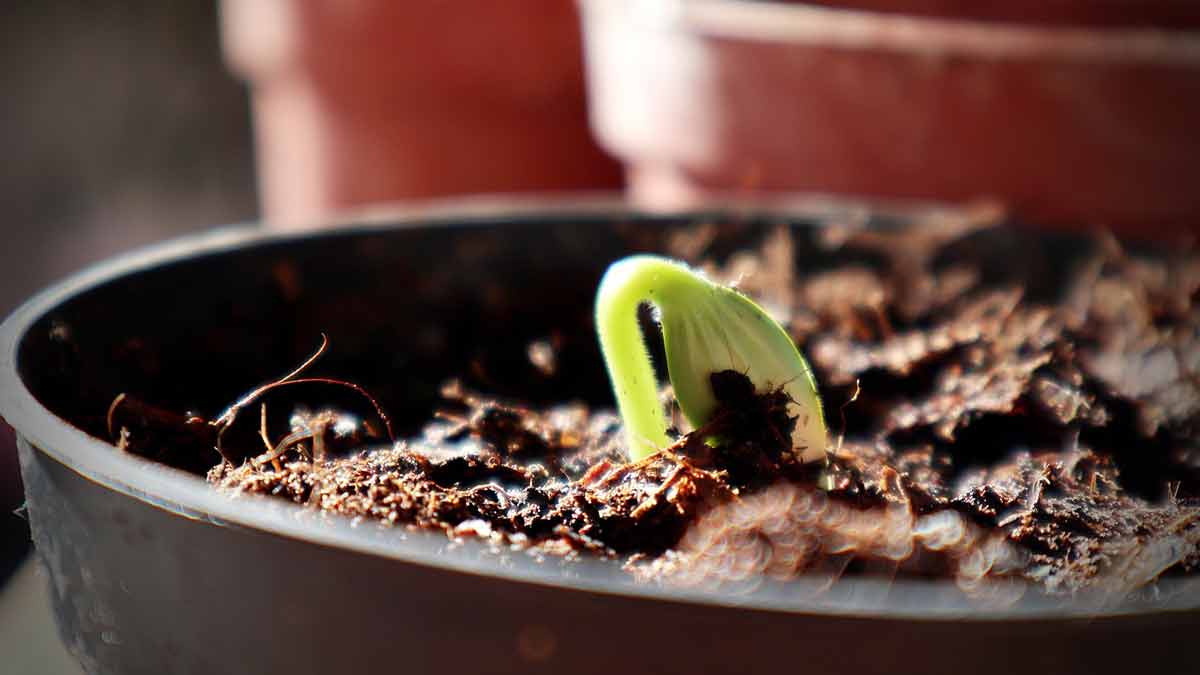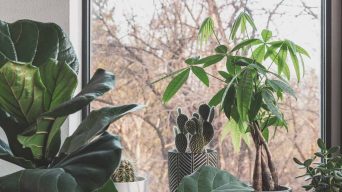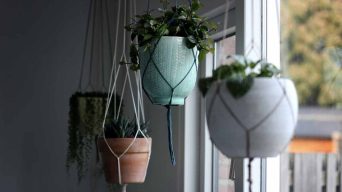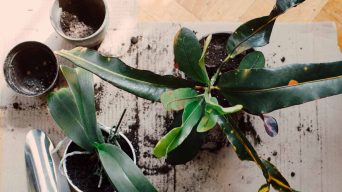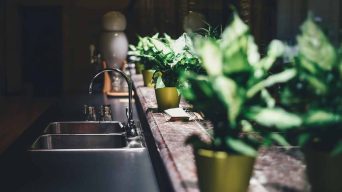Growing indoor plants from seeds requires seed-starting trays, seed-starting soil mix, and a light source. Loosen and dampen the soil mix, plant seeds at three times their diameter depth, and keep them in a warm and bright location with adequate ventilation. Keep soil moist but not waterlogged to prevent mold or mildew growth.
Indoor plants are a great way to bring life and color into your home. However, buying fully grown plants can be expensive.
Growing indoor plants from seeds is a cost-effective and rewarding way to decorate your home.
Starting plants from seeds can be intimidating, but it doesn’t have to be.
Anyone can grow indoor plants from seeds with the right tools and knowledge.
In this article, we will provide you with a complete guide on how to grow indoor plants from seeds, from choosing the correct container to preparing seedlings for the outdoors.
Growing indoor plants from seeds is a great way to save money and allow you to choose from a wider variety of plants.
You can start anything from herbs and vegetables to flowers and succulents.
So, let’s get started on this exciting journey of growing indoor plants from seeds!
Choosing Seeds
Choosing the right seeds is crucial for growing seeds indoors.
Here are a few things to consider when selecting seeds:
- Seed Type: There are different types of seeds available, including hybrid, heirloom, and open-pollinated seeds. Hybrid seeds are a cross between two different varieties, resulting in a plant with desirable traits. Heirloom seeds are old varieties that have been passed down through generations. Open-pollinated seeds are pollinated naturally, resulting in plants with genetic diversity.
- Seed Quality: Choose seeds that are high quality and free from disease or damage. Look for seeds that are plump, firm, and have a uniform color.
- Seed Source: Purchase seeds from a reputable source, such as a garden center or online seed supplier. Avoid buying seeds from unknown sources, as they may not be reliable or may be contaminated with disease.
- Seed Germination: Check the seed packet for germination rate and time information. Choose seeds that have a high germination rate and a short germination time.
- Seed Suitability: Consider the growing conditions in your home when selecting seeds. Choose seeds suitable for the amount of light, humidity, and temperature in your home.
You can choose the right seeds for your indoor gardening needs by considering these factors.
Once you have selected your seeds, you can move on to the next step of starting them indoors.
Preparing Soil
Preparing the soil is an important step when growing houseplants from seeds.
The soil should be light, airy, and nutrient-rich to provide a good seed germination and growth environment.
Here are a few tips to prepare the soil for indoor plant seeds:
- Choose a high-quality potting mix that is specifically formulated for seed starting. Avoid using garden soil or compost, as they can contain weed seeds, pathogens, and other contaminants that can harm your seedlings.
- Moisten the soil before filling the seed trays or containers. Use warm water to avoid shocking the seeds with cold water.
- Fill the seed trays or containers with the moistened soil, leaving about 1/4 inch of space at the top. Tamp down the soil lightly to remove any air pockets.
- Label the trays or containers with the plant’s name and the planting date to keep track of your seeds.
It’s also important to maintain the soil’s moisture level to ensure successful seed germination.
Here are a few tips to keep the soil moist:
- Water the soil from the bottom by placing the seed trays or containers in a shallow tray filled with water. This allows the soil to absorb water without disturbing the seeds.
- Check the soil moisture level regularly and add water as needed. Avoid overwatering, as this can cause the seeds to rot or the seedlings to develop the damping-off disease.
- Cover the seed trays or containers with a clear plastic dome or plastic wrap to create a humid environment that promotes seed germination. Remove the cover once the seeds have sprouted.
By following these tips, you can prepare the soil for indoor plant seeds and give your seedlings the best chance for success.
Planting Seeds
Planting seeds is an easy and rewarding way to grow plants indoors. Here are some steps to help you get started:
- Choose your seeds: You can purchase seeds from a nursery or online. Make sure to choose seeds suitable for indoor growing and match your home’s lighting and temperature conditions.
- Prepare your soil: Choose a light soil mix that is well-draining and sterile. Fill your seed tray or pot with soil, leaving some space at the top for watering.
- Sow your seeds: Follow the instructions on the seed packet for the correct depth and spacing. Cover the seeds with a thin layer of soil and gently water them.
- Label your seeds: Labeling your seeds is important so you know what you’ve planted. Use plant markers or popsicle sticks to identify each type of seed.
- Provide the right conditions: Place your seed tray or pot in a warm, bright spot but out of direct sunlight. Keep the soil moist but not waterlogged. Cover the tray or pot with plastic wrap or a humidity dome to create a mini greenhouse and help retain moisture.
- Wait for germination: Depending on the type of seed, germination can take anywhere from a few days to a few weeks. Be patient and watch your seeds, making sure to water them regularly.
Once your seeds have germinated, and the seedlings have grown a few leaves, you can transplant them into larger pots or containers.
Follow the instructions on the seed packet for the correct spacing and care instructions.
You can enjoy growing various plant seeds indoors with patience and care.
Providing Proper Care
Once your seeds have sprouted, providing them with the proper care is important to ensure they grow into healthy plants.
Here are some tips to keep in mind:
- Watering: Water your plants consistently, but be careful not to overwater. Make sure the soil is moist but not soggy. Use a watering can or spray bottle to avoid disturbing the soil and seedlings.
- Light: Most indoor plants need plenty of light to thrive. Place your seedlings near a bright window or use grow lights to provide adequate light.
- Temperature: Keep your plants in a warm area with consistent temperatures. Avoid placing them near cold drafts or hot radiators.
- Fertilizer: Once your seedlings have a few sets of true leaves, you can start fertilizing them with a diluted liquid fertilizer. Be careful not to over-fertilize, as this can damage the plants.
- Transplanting: As your plants grow, they may need transplanted into larger containers. Be sure to use a high-quality potting mix and handle the seedlings gently to avoid damaging the roots.
By providing your indoor plants with the proper care, you can help them grow into healthy, thriving plants.
Keep an eye on them and adjust their care as needed to ensure they have the best chance of success.
Troubleshooting Common Issues
While starting seeds indoors can be a rewarding experience, it can also come with its fair share of challenges.
Here are some common issues that may arise and how to troubleshoot them:
Slow Germination
If your seeds take longer than expected to germinate, there could be a few reasons.
Firstly, ensure the soil is moist but not waterlogged, as excess moisture can cause the seeds to rot.
Additionally, ensure the temperature is within the range recommended for the specific houseplant species.
If these factors are not the issue, it could be that the seeds are too old or were not stored properly.
Check the expiration date on the seed packet and ensure that they were stored in a cool, dry place.
Leggy Seedlings
Leggy seedlings are those that have stretched out and have a weak stem.
This can be caused by insufficient light or by planting the seeds too deep.
Ensure that your seedlings receive enough light from a grow light or a sunny window.
Additionally, ensure that you plant the seeds at the correct depth, generally 2-3 times the seed size.
Wilting Seedlings
If your seedlings are wilting, there could be a few reasons why.
Firstly, ensure the soil is moist, and the plants are not underwatered.
Conversely, overwatering can also cause wilting, so allow the soil to dry out slightly between waterings.
Additionally, check for signs of pests or disease, as these can cause wilting.
Damping Off
Damping off is a fungal disease that can kill seedlings.
The sudden collapse of the stem at the soil line and the appearance of a white, fuzzy mold characterize it.
To prevent damping off, ensure that your seed trays and soil are sterilized before planting.
Additionally, avoid overcrowding the seedlings and ensure they receive enough air circulation.
By troubleshooting these common issues, you can ensure that your indoor plants from seeds are healthy and thriving.
Remember to be patient and persistent, and don’t be afraid to experiment with different techniques to find what works best for you.
Harvesting and Repotting
Once your indoor plants have grown to a healthy size, it’s time to harvest and repot them to ensure continued growth and health.
Here are some tips to help you through the process:
- Harvesting: When harvesting your plants, use clean, sharp scissors or pruning shears to avoid damaging the plant. Cut the stem just above a leaf node to encourage new growth.
- Repotting: Choose a pot slightly larger than the current one to allow room for growth. Make sure the new pot has drainage holes to prevent overwatering. Fill the bottom of the pot with a layer of gravel or rocks to aid in drainage. Add fresh potting soil and gently remove the plant from its old pot, being careful not to damage the roots. Place the plant in the new pot and fill the gaps with additional potting mix. Water the plant thoroughly.
- Maintenance: After repotting, keep the plant in a bright, sunny location and water it regularly. Fertilize the plant monthly during the growing season to provide essential nutrients.
Remember, each houseplant has its specific needs, so research the particular plant you are growing to ensure you provide the proper care.
Final Thoughts
Growing indoor plants from seeds can be a rewarding and fulfilling experience, even for beginners.
Anyone can successfully grow and care for various indoor plants with the right tools and techniques.
Remember to choose the appropriate seeds for your skill level and the conditions in your home, provide adequate lighting and water, and keep a close eye on your plants for any signs of stress or disease.
By following these tips and nurturing your plants, you can enjoy a beautiful and thriving indoor garden in no time.

